Public realm ignored again as latest annual Greenwich Section 106 figures revealed
Yesterday I looked into the ongoing puzzle of annual payments from developers to Greenwich Council that should benefit residents that come from one of two main funding streams; the Community Infrastructure Levy.
Once again Greenwich have obtained a small amount of income from that source of funding which continues a trend seen since introduction in 2015. There have been exceptional circumstances since March 2020, yet it follows a clear pattern in the borough over the proceeding five years of falling way behind many other boroughs.
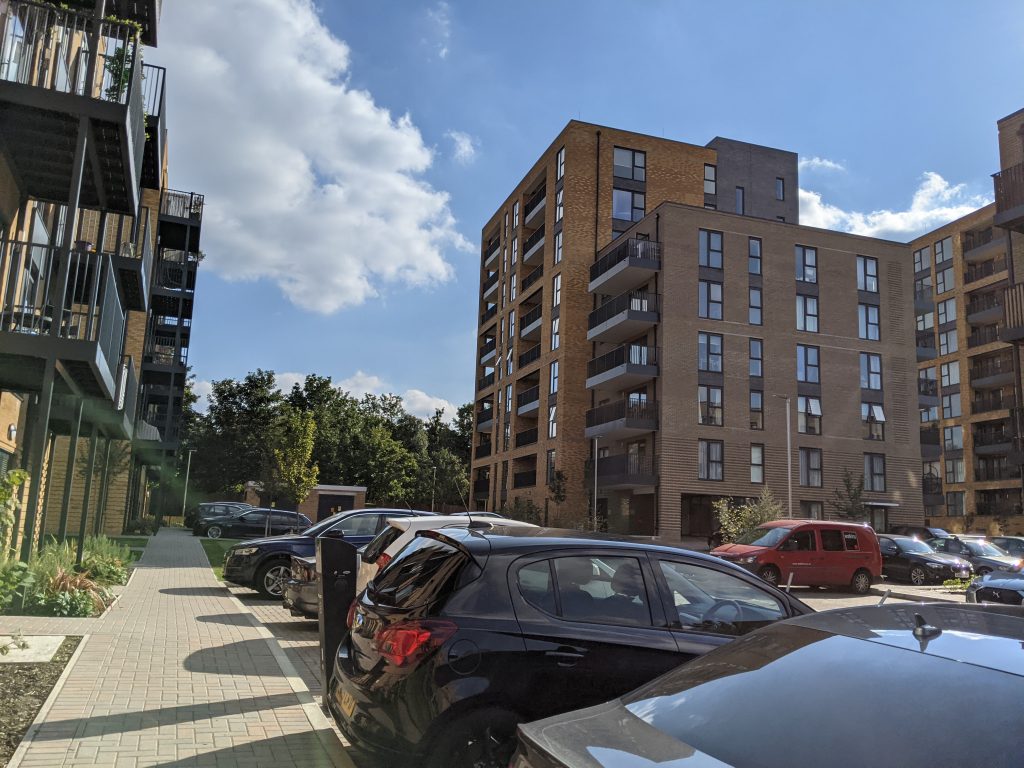
It’s not as if the borough has been lacking when it comes to cranes and rising developments, and official data backs that up with high housebuilding totals.
One reason given by the authority’s Planning Department for low income was that many developments pre-date the introduction of CIL and are liable to Section 106 alone. They mention Kidbrooke Village in the latest report as an example of why CIL income is so low, yet Kidbrooke Village is mentioned in the previous year’s report on income from the Community Infrastructure Levy:

A new report before Greenwich Council’s Cabinet next week also covers the other main source of income from new builds called Section 106, and shows that’s hardly making up for extremely low CIL income.
S106 income doesn’t explain why Greenwich are lagging so far behind comparable boroughs from the other funding stream. S106 income shows a sudden drop in funding secured since CIL was introduced in 2015.
This raises some other questions. In 2019/20 they received £7.7 million yet spent zero on their Crossrail allocation leaving a large total to be met before 2023:
You may think perhaps that missing 2019/20 Crossrail payment has been rolled over, yet even then a payment of £594,290 in 2020/21, which is far below what would be expected.
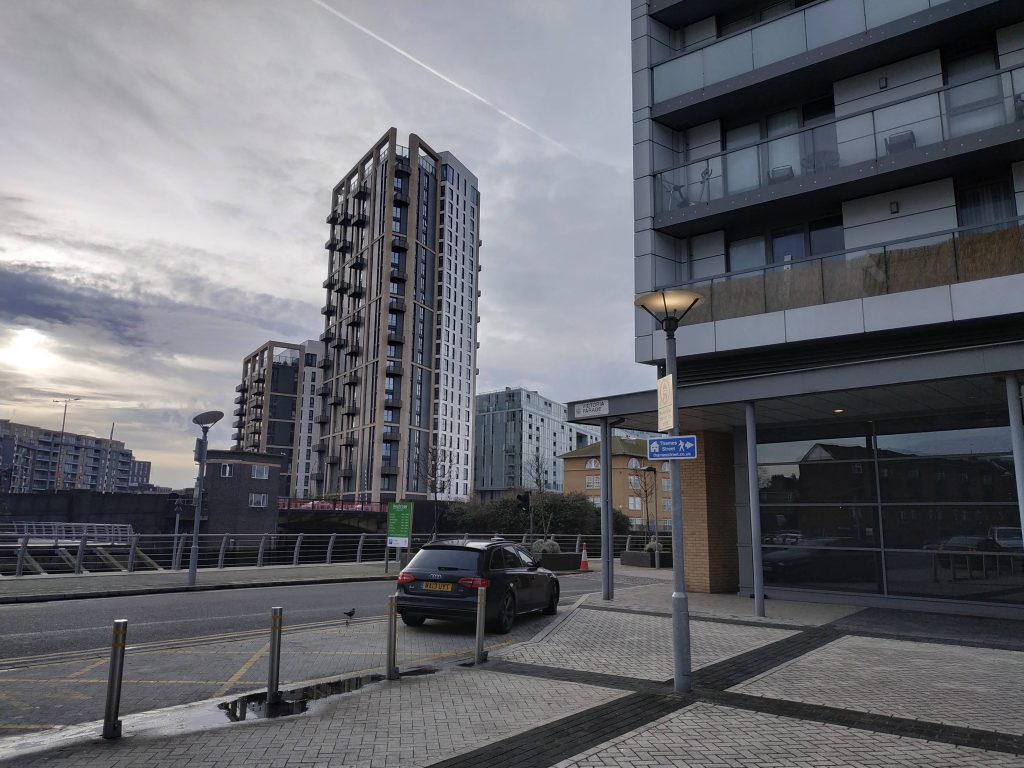
In terms of what the authority spent Section 106 on over the last year, we again gain a good insight into how certain pet projects gain the lions share.
Despite much talk and numerous council reports, they again appear to show a complete lack of interest in encouraging safe and appealing routes for pedestrians to reach shops, public transport and services by giving just £3,893 to public realm out of almost £3.2 million.
Once again action contradicts numerous reports which continually state they will encourage people to walk or cycle:

You may think £934,279 for transport may encompass active travel. Well, as someone who’s read pretty much every major planning application for years and how income will be allocated, it almost never does.

One recent example is allocating hundreds of thousands to Thames Clippers at Morden Wharf and a far smaller sum to improve pedestrian links to the nearest tube station.
That’s despite Thames Clippers capacity being a fraction compared to the potential numbers of those who could use active travel to reach the tube or railway stations if a safe and practical link was provided.
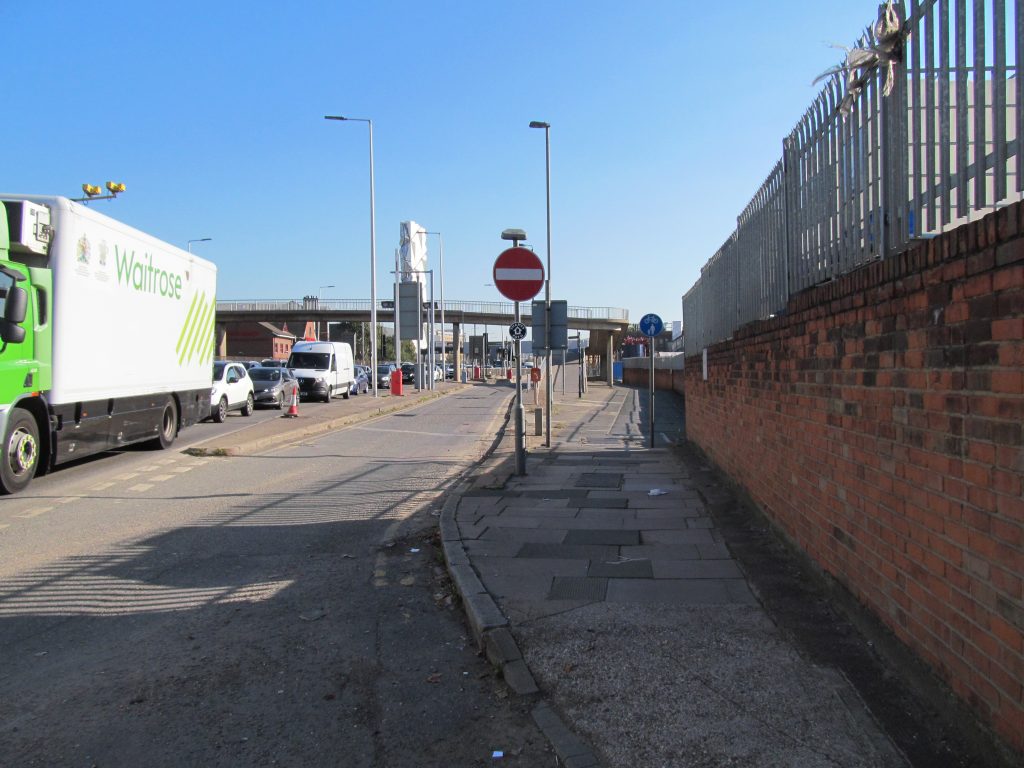
“Open space” is usually parks and doesn’t cover improving pedestrian routes for thousands of new residents moving into various developments, whether it be Greenwich Peninsula, East Greenwich, Charlton or beyond. It happens across the borough.
It won’t surprise many to see that while public realm saw just £3,893, the council’s GLLaB employment broker saw £754,406, a sum which exceeds health at £379,820.
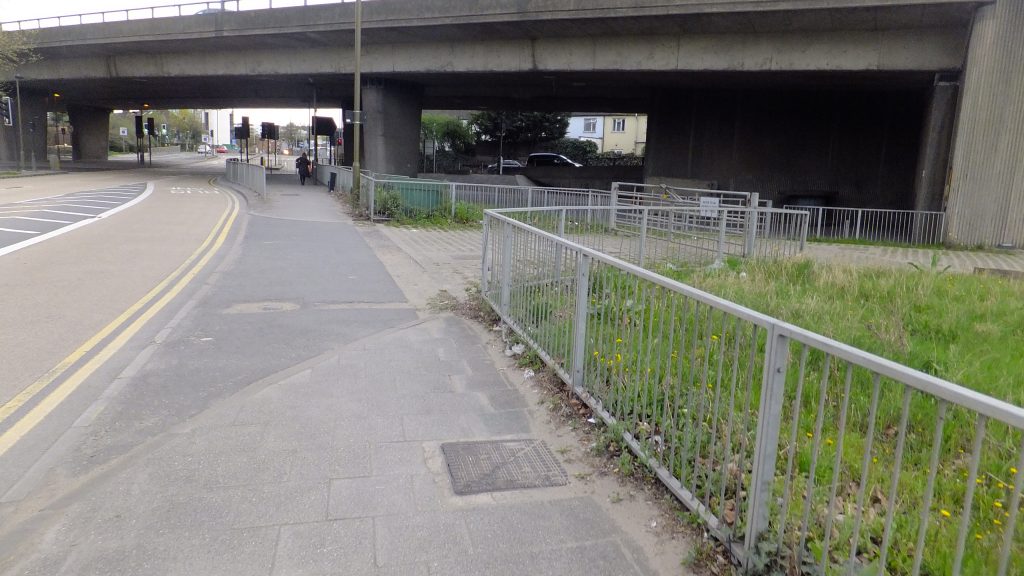
The local NHS has regularly complained of not receiving sufficient funding from council S106 agreements.
One reason given for not spending on key routes is that S106 rules did change from 2015 – though money could still be pooled from a number of development to fund projects in another area – and that excuse doesn’t stack up.
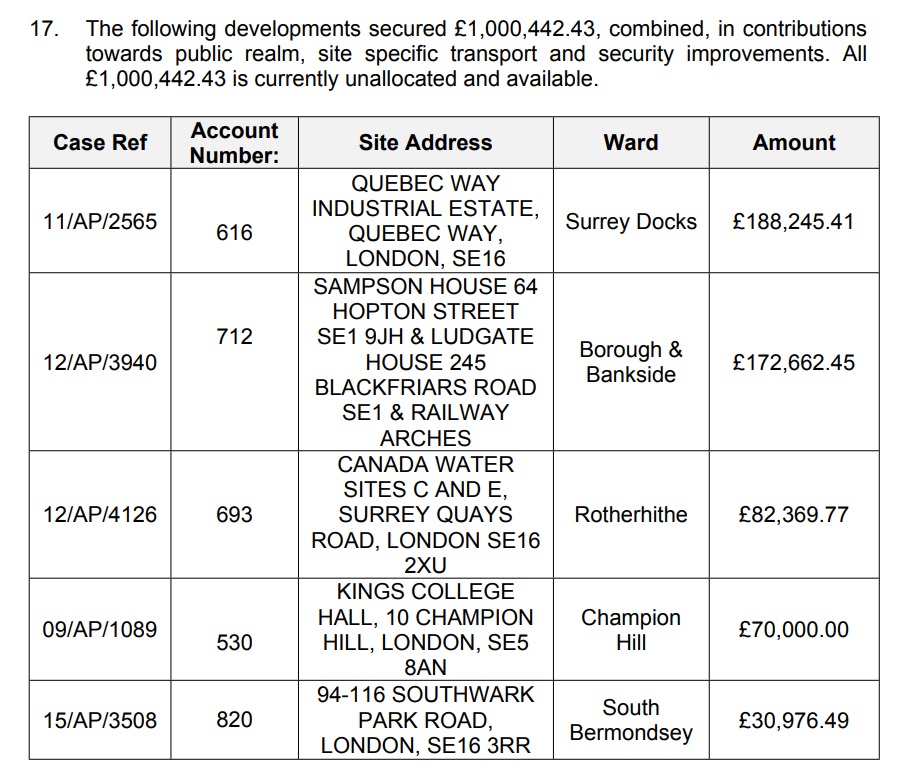
Greenwich’s excuse has long been they cannot do this which explains why deprived areas also miss out. Plenty of example’s out there show it can be done:
CIL
This would all be somewhat immaterial (to an extent) if the alternative form of developer in Community Infrastructure Levy income funding wasn’t so lacking, with Greenwich obtaining so little since 2015.
In 2019/20 Greenwich saw £1.3 million with totals in other boroughs of high development below:
- Westminster: £36.9m
- Wandsworth: £32m
- Brent: £26.5m
- Tower Hamlets: £23.3m
Greenwich’s total over the entire period of 2015/16 to 2020/21 is just £9.7 million, which is below many borough’s income in just one year.
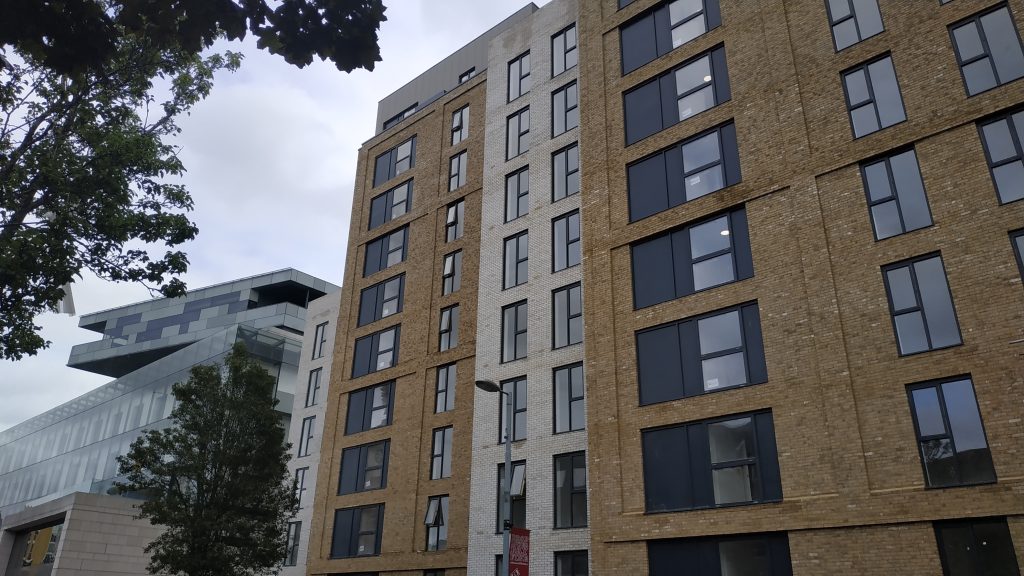
One reason given by Greenwich Planning Department is the “high level” of affordable homes which enables lesser CIL rates for developers, yet the latest London Plan monitoring report published in March 2021 shows Greenwich were below the London average between from 2016/17 to 2018/19:
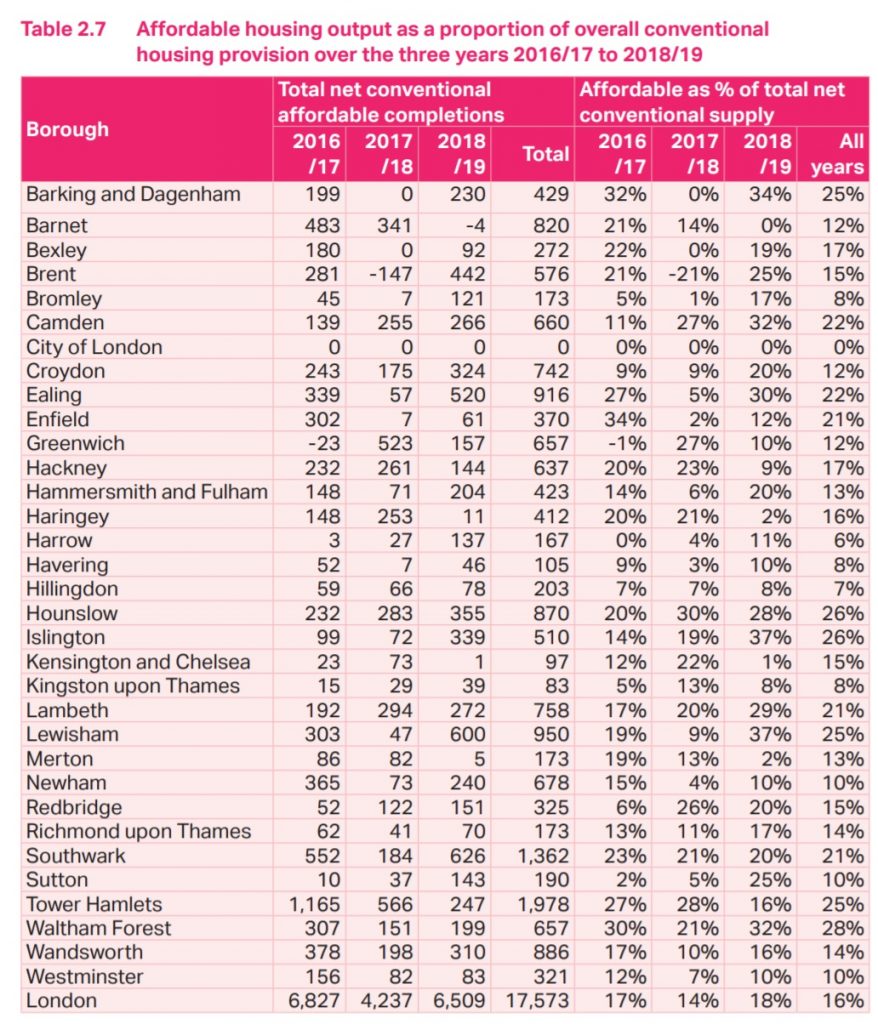
Data for 2019/20 show increases in Greenwich’s affordable housing starts, but nowhere near enough to explain the vast gap in CIL income that financial year.
In September they announced tentative measures which acknowledged something is wrong and claimed two new staff would ensure:
- Regular development monitoring based on quarterly checks of Council records (Council Tax, Street Naming and Numbering, Building Control) and Google Maps for evidence of commencement.
- Review of all development that has been granted CIL relief to ensure that no disqualifying events have occurred within the 7-year claw back period. In the event that a disqualifying event has occurred, the borough can remove the relief and seek to recover the CIL owed.
Shouldn’t this have been happening for six years? It’s not as if funding isn’t there despite council cuts, as CIL allows five per cent of all income allocated for administration and Greenwich are not using the full amount.
The jury’s out on whether It’s anywhere near enough.
Right now we have a situation where Greenwich are receiving relatively small amounts from S106 as CIL superseded it to become the main source of funding for many boroughs, and yet Greenwich trails the vast majority of London boroughs on CIL income since 2015.
To compound that, what is coming in is overwhelmingly ignoring key areas such as safe and attractive pedestrian links to aid local congestion, health and business.
In coming weeks and months other boroughs will reveal their latest reports on developer income. I’ll be keeping watch and comparing to Greenwich to see if the same trend remains.
To view part one of this look at the latest report click here.
Running a site alone takes time and a fair bit of money. Adverts are far from enough to cover it and my living costs as a private renter.
You can support me including via Paypal here Another option is via Patreon by clicking here You can also buy me a beer/coffee at Ko-fi here There's also a Facebook page for the site here Many thanks


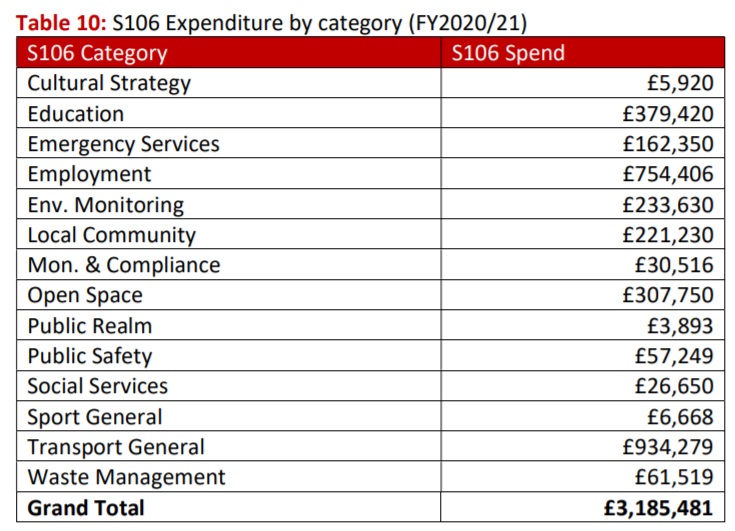

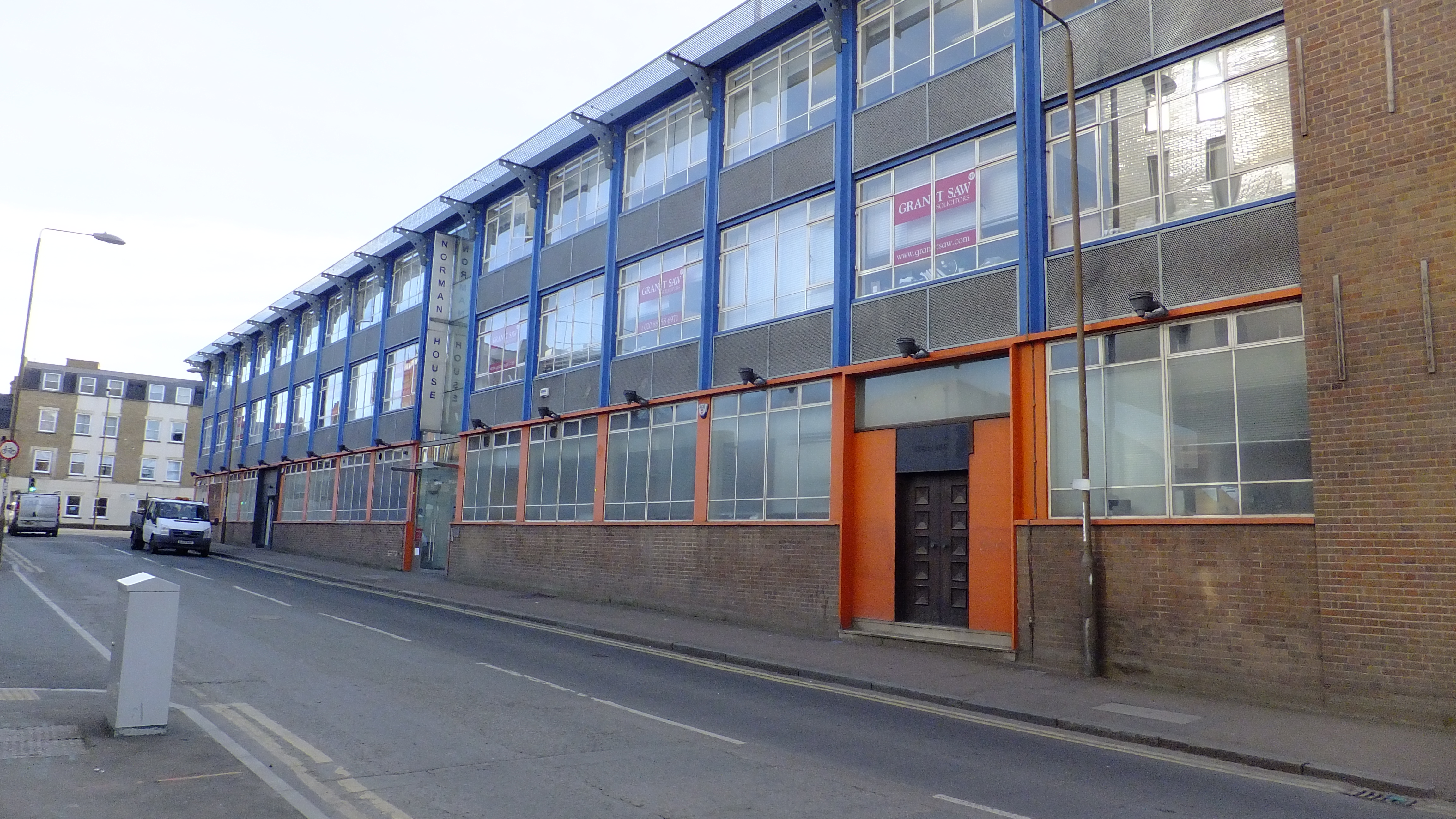

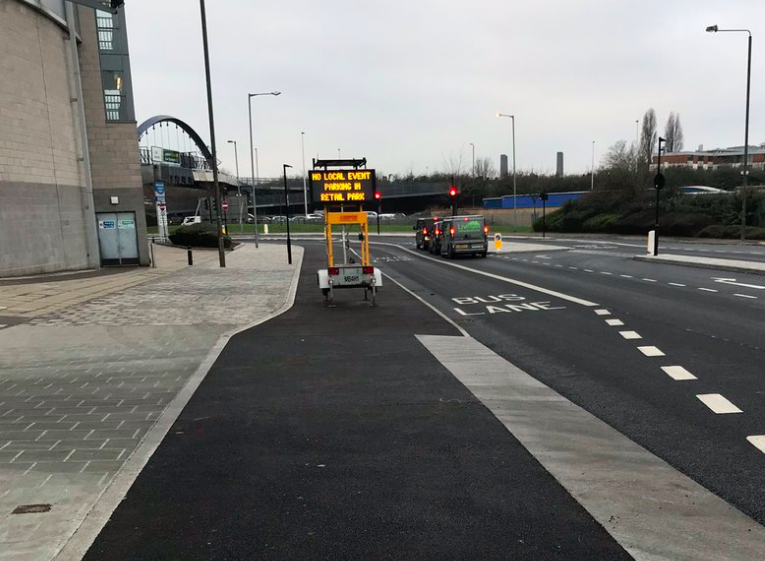


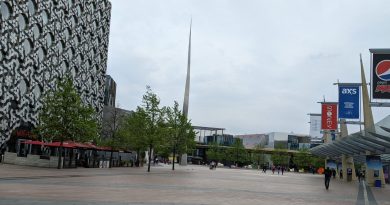
Thanks for all your work on this. It is impossible to find any performance or impact information on GLLaB, with the last reports being for 2019 and then only based on qualitative responses from a very small sample. It is still a mystery how the distribution of Cil etc income is actually decided and subsequently allocated … complete lack of transparancy.
Indeed. I’ve just been looking at other boroughs. None I find give such disproportionate amount to their equivalents of GLLaB. What is it doing to earn such large amounts?
They hired two staff to do a job and presumably a lead for that team, yet it has not produced much needed results. I suspect the competitency of those new hires is minimal and senior oversight is absent knowing the crap greenwich council staff produce.
Great series of articles shedding light on disfunction and most probably corruption… A few thousand £ for an officer to not bother doing their job would save a developer hundreds times more. Easy to see a side gig exassabated by council incompetence.
Pingback: GBGP Newsletter #60: Start the New Year volunteering - Greenwich and Bexley Green Party